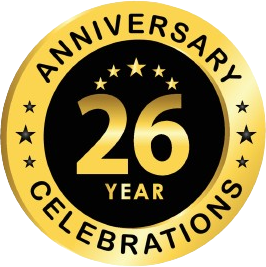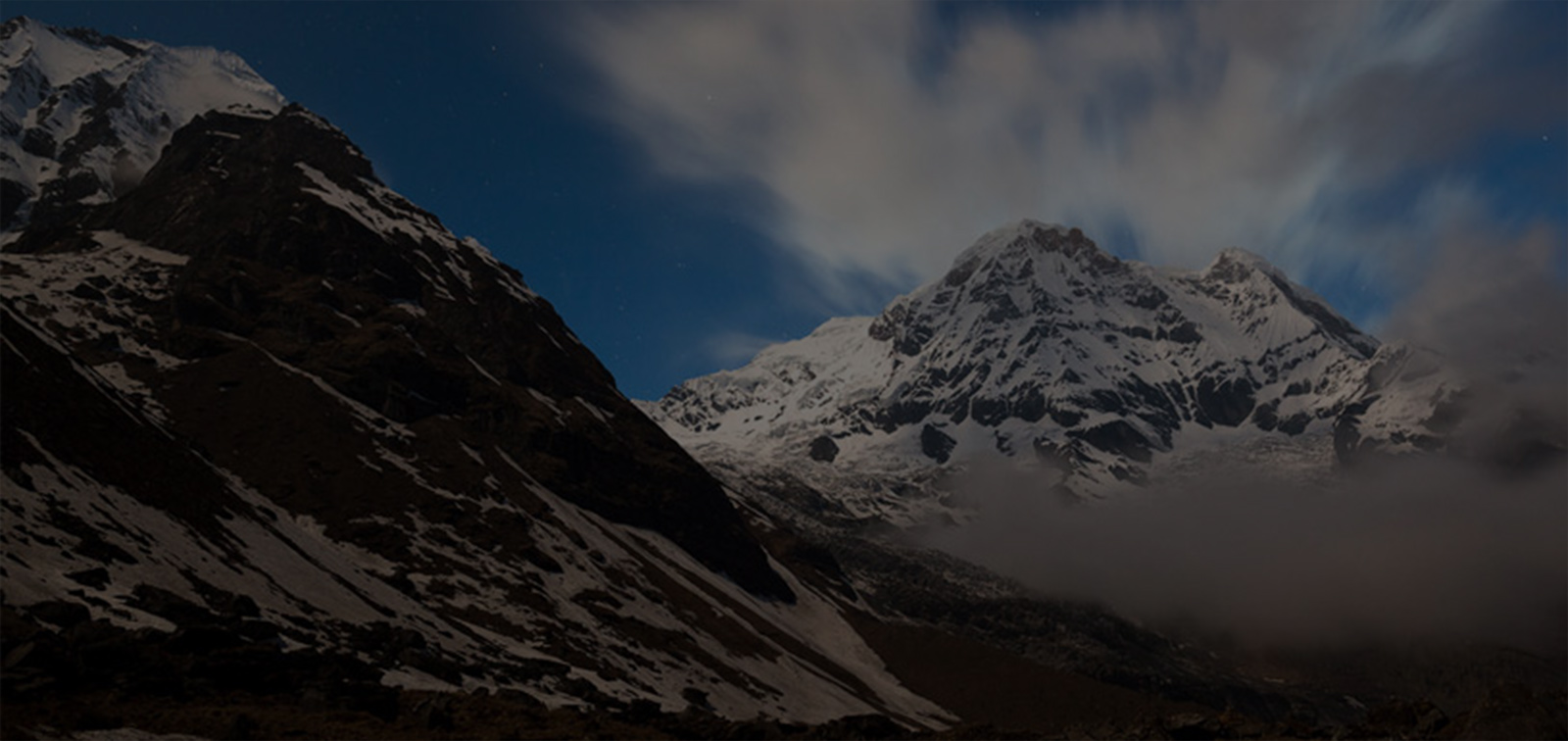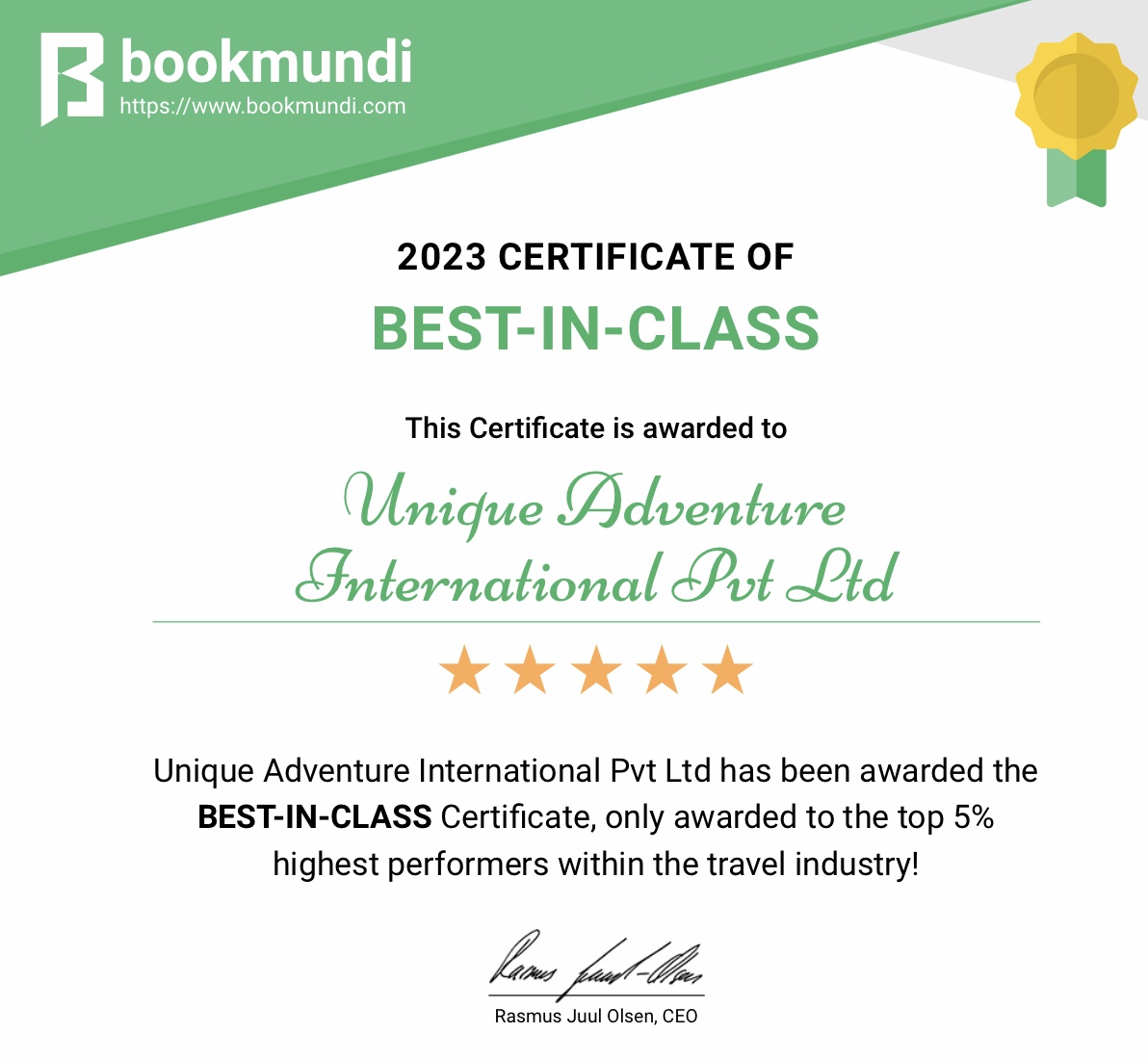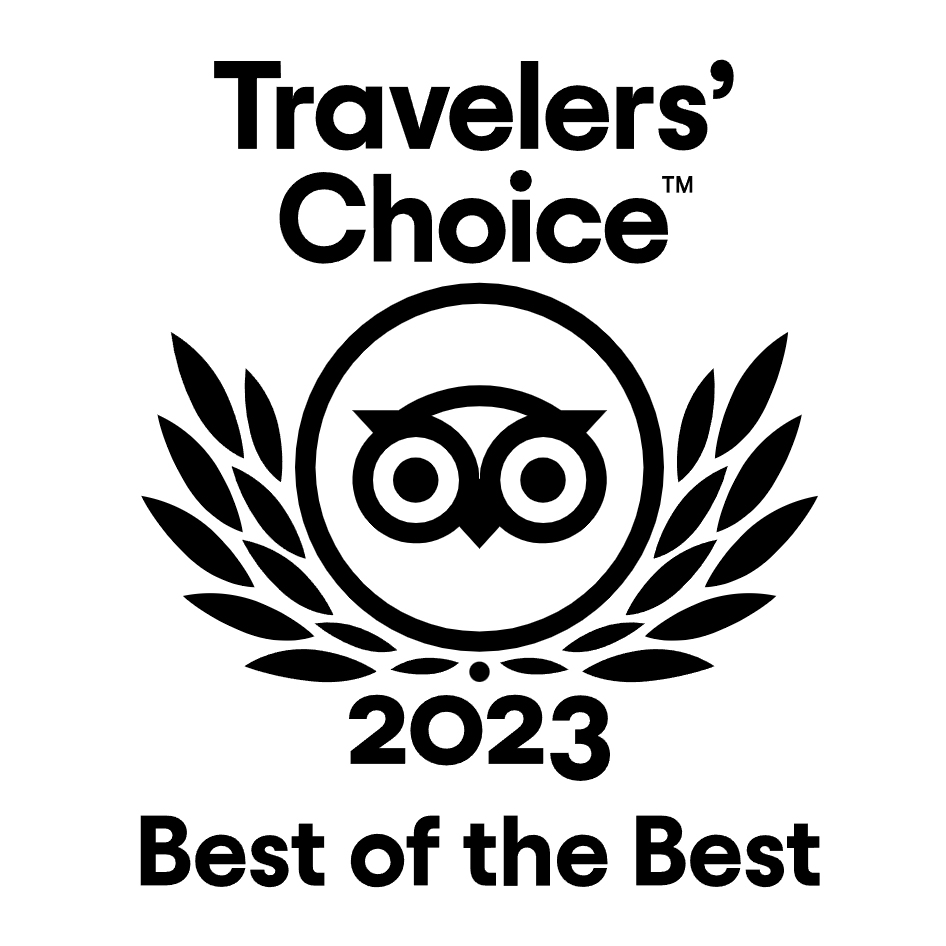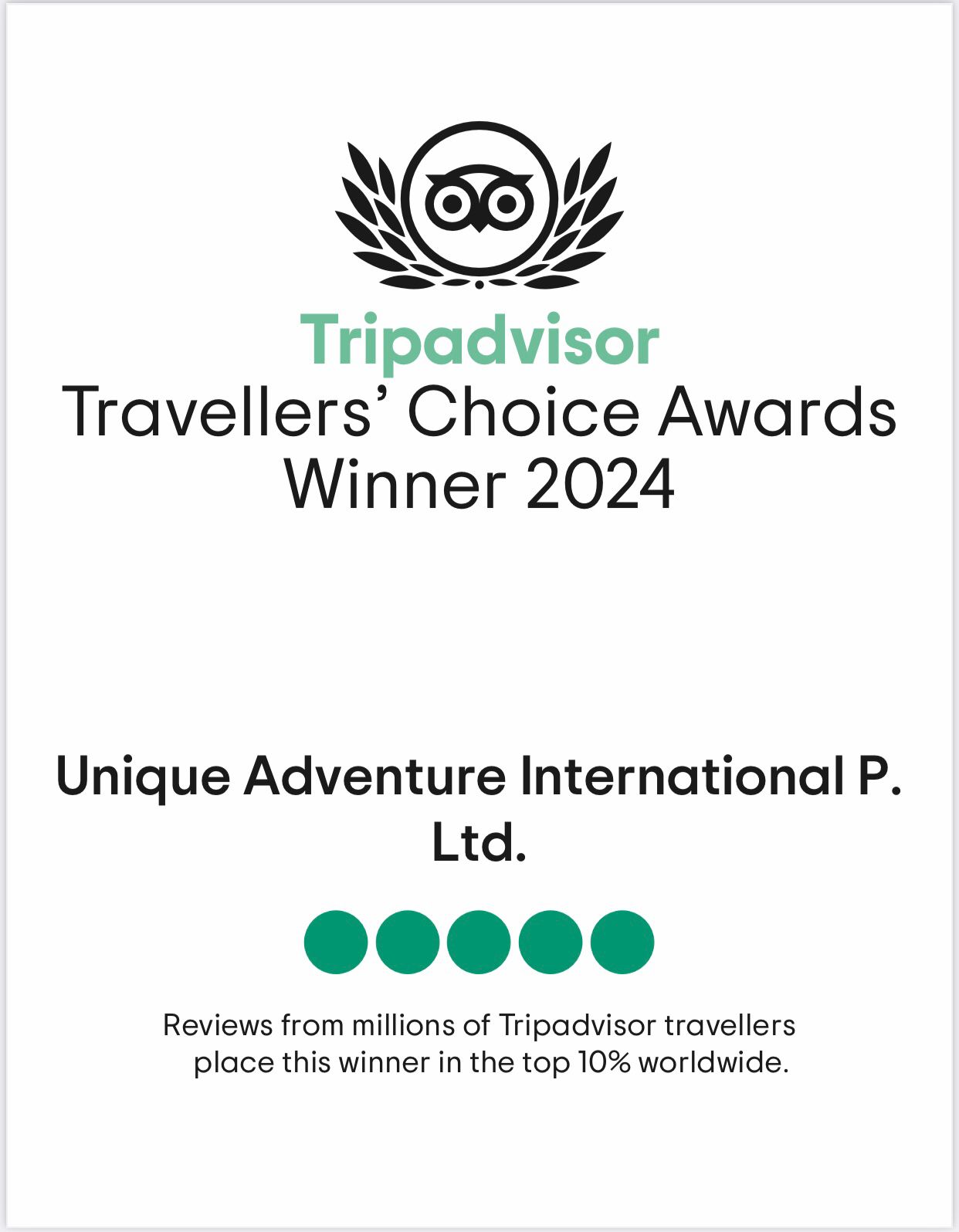Visa
As of July 16, 2008, tourists visiting Nepal are required to adhere to specific rules and regulations regarding tourist visas. These guidelines aim to ensure proper documentation and entry procedures for visitors to the country. Here are the key rules regarding tourist visas in Nepal:
1. Valid Passport and Visa Requirement: Tourists planning to visit Nepal must possess a valid passport and obtain a tourist visa before entering the country. The passport must have a validity of at least six months from the date of entry into Nepal.
2. Tourist Visa Application: To obtain a tourist visa for Nepal, visitors can apply through Nepal's diplomatic missions abroad, including embassies, consulates, and diplomatic offices. Additionally, tourist visas can also be obtained upon arrival at designated immigration offices and entry points in Nepal.
3. Visa Duration and Fees: The duration and fees for tourist visas may vary depending on the visitor's nationality and the duration of their stay. Tourist visas are typically issued for durations ranging from 15 days to 90 days, with corresponding fees based on the length of stay. Visitors can check with Nepalese diplomatic missions or immigration authorities for specific visa requirements and fee structures.
4. Visa Extension: Tourists who wish to extend their stay in Nepal beyond the validity period of their tourist visa can apply for a visa extension at the Department of Immigration in Kathmandu or at designated immigration offices in other cities and regions of Nepal. Visa extensions are subject to approval and may incur additional fees.
5. Entry and Exit Formalities: Upon arrival in Nepal, tourists must go through immigration clearance procedures at the designated entry points, where they will present their valid passport, visa, and any other required documentation. Similarly, upon departure from Nepal, visitors must go through exit formalities at the designated exit points.
By adhering to the tourist visa rules and regulations in Nepal, visitors can ensure a smooth and hassle-free entry and stay in the country. Proper documentation and compliance with visa requirements contribute to a positive travel experience, allowing tourists to explore Nepal's rich cultural heritage, natural beauty, and adventure offerings with peace of mind.
Entry:
a. Tourist entry visa can be obtained for the following duration from Nepal Embassy / Consulate or Mission offices abroad, or at the following immigration offices in Nepal:
Tourist entry visas for Nepal can be acquired through various channels, including Nepal's diplomatic missions abroad or directly at designated immigration offices within the country. The following locations serve as entry points for obtaining tourist visas:
1. Tribhuvan International Airport, Kathmandu: As Nepal's primary international airport, Tribhuvan International Airport in Kathmandu facilitates the arrival of visitors from around the world. Tourists can obtain their visas upon landing at the airport, streamlining the entry process.
2. Kakarvitta, Jhapa (Eastern Nepal): Located in the eastern region of Nepal, Kakarvitta serves as an immigration checkpoint for travelers entering Nepal from neighboring countries like India. Tourists arriving here can apply for their entry visas, allowing them to explore the rich cultural and natural heritage of Nepal's eastern region.
3. Birgunj, Parsa (Central Nepal): Situated in central Nepal, Birgunj is a crucial entry point for travelers crossing over from India. At this immigration office, tourists can complete the necessary visa procedures before venturing further into Nepal's diverse landscapes and historical sites.
4. Kodari, Sindhupalchowk (Northern Border): Kodari, located on Nepal's northern border, facilitates entry for tourists arriving from Tibet, China. This immigration office enables travelers to obtain their visas, granting them access to Nepal's breathtaking Himalayan vistas and remote northern regions.
5. Belhiya, Bhairahawa (Rupandehi, Western Nepal): Serving as a gateway to Nepal's western region, Belhiya in Bhairahawa offers tourists the opportunity to acquire their visas before embarking on journeys to iconic destinations like Lumbini, the birthplace of Lord Buddha, and the picturesque landscapes of the Terai region.
6. Jamuna, Nepalgunj (Banke, Mid-Western Nepal): Positioned in mid-western Nepal, Jamuna in Nepalgunj facilitates entry for travelers exploring the diverse cultural and natural attractions of the region. Tourists can obtain their visas here, unlocking access to national parks, wildlife reserves, and cultural heritage sites.
7. Mohana, Dhangadhi (Kailali, Far Western Nepal): Located in far-western Nepal, Mohana in Dhangadhi serves as an entry point for tourists eager to discover the hidden treasures of the region. Travelers can secure their visas at this immigration office, setting the stage for adventures in remote mountainous terrain and unique cultural enclaves.
8. Gaddachauki, Mahendranagar (Kanchanpur, Far Western Nepal): Situated in the far-western district of Kanchanpur, Gaddachauki provides travelers with the opportunity to obtain their visas before exploring the untamed wilderness and cultural heritage of far-western Nepal.
These designated immigration offices cater to the needs of tourists arriving in Nepal, ensuring a smooth and hassle-free entry process, allowing visitors to embark on unforgettable journeys through the enchanting landscapes and vibrant cultures of the Himalayan nation.
b. Tourist Visa
For tourists planning to visit Nepal, various visa options are available, catering to different durations of stay. The tourist visa facility offers multiple-entry options with corresponding durations and fees, as outlined below:
- Multiple Entry - 15 Days: This visa allows tourists to enter Nepal multiple times within a duration of 15 days. The fee for this option is US$ 25 or its equivalent in convertible currency. Ideal for short-term visits or brief exploration of Nepal's attractions.
- Multiple Entry - 30 Days: Tourists opting for this visa can enjoy multiple entries into Nepal over a period of 30 days. The fee for the 30-day multiple-entry visa is US$ 40 or its equivalent in convertible currency. It provides travelers with extended flexibility to explore the diverse landscapes and cultural heritage of Nepal.
- Multiple Entry - 90 Days: For those planning an extensive stay or a more in-depth exploration of Nepal, the 90-day multiple-entry visa offers the flexibility needed. This visa allows multiple entries into the country over a generous duration of 90 days. The fee for this option is US$ 100 or its equivalent in convertible currency, accommodating longer-term travelers and enthusiasts seeking immersive experiences in Nepal's rich tapestry of sights and experiences.
These tourist visa options cater to the varying needs and preferences of travelers, ensuring accessibility and convenience for those embarking on journeys to discover the beauty and charm of Nepal. Whether for a short vacation, an extended adventure, or an immersive cultural experience, these visa facilities facilitate seamless entry into Nepal, welcoming visitors to explore its enchanting landscapes, ancient traditions, and warm hospitality.
Tourist Visa Extension
Tourists visiting Nepal have the option to extend their visas should they wish to prolong their stay beyond the initial granted period. The tourist visa extension process is designed to accommodate travelers who wish to explore more of Nepal's diverse landscapes, cultural heritage, and experiences. The extension fees and regulations are as follows:
- Extension for 15 days or less: Tourists seeking a short-term extension of 15 days or less can do so by paying a flat fee of US $30 or its equivalent in convertible Nepalese currency. This option is ideal for travelers who require a brief extension to complete their exploration or travel plans within Nepal.
- Extension for more than 15 days: For tourists needing an extension beyond the initial 15 days, the fee structure entails a daily rate of US $2. This flexible approach allows travelers to extend their visas according to their specific needs and itinerary, paying only for the additional days they require beyond the initial 15-day period.
- Maximum extension period: Tourists can extend their visas for a maximum period of 150 days within a single visa year, which spans from January to December. This generous allowance provides travelers with ample opportunity to immerse themselves in the beauty, culture, and experiences that Nepal has to offer.
By offering visa extensions with reasonable fees and accommodating regulations, Nepal encourages tourists to delve deeper into its wonders, fostering longer and more enriching experiences for travelers from around the world. Whether it's trekking in the Himalayas, exploring ancient temples, or discovering vibrant local markets, the tourist visa extension process enables visitors to make the most of their time in this enchanting Himalayan nation.
Gratis (Free) Visa
Nepal extends a warm welcome to citizens of member states of the South Asian Association for Regional Cooperation (SAARC) by offering a gratis (free) visa for a duration of 30 days. This policy aims to foster closer ties and promote tourism among the SAARC nations, allowing citizens of these countries to explore Nepal's rich cultural heritage, natural beauty, and adventure offerings without the burden of visa fees.
Additionally, special arrangements exist for Indian nationals, who enjoy visa-free entry into Nepal. This exemption underscores the close historical, cultural, and economic ties between Nepal and India, facilitating seamless travel and fostering greater connectivity between the two nations.
By waiving visa fees for SAARC member states and offering visa-free entry for Indian nationals, Nepal demonstrates its commitment to promoting regional cooperation, enhancing people-to-people exchanges, and facilitating tourism within the South Asian region. These initiatives contribute to the mutual benefit and prosperity of all participating nations, while encouraging cross-border travel and cultural exchange.
Transit Visa
For travelers transiting through Nepal via Tribhuvan International Airport, the country offers a convenient transit visa option. This transit visa allows for a one-day stay in Nepal and can be obtained directly from Nepal's immigration offices at the entry points, provided travelers present a departure flight ticket confirming their onward journey from Tribhuvan International Airport.
Key details of the transit visa are as follows:
- Duration: The transit visa is valid for a single day, accommodating travelers with short layovers or stopovers in Nepal as they continue their journey to their final destination.
- Application Process: Travelers can apply for the transit visa upon arrival at Nepal's immigration offices located at the entry points, including Tribhuvan International Airport. The presentation of a departure flight ticket from Tribhuvan International Airport is required as proof of onward travel.
- Fee: The fee for the transit visa is US $5 or its equivalent in convertible currency. This nominal fee ensures a smooth and hassle-free transit experience for travelers passing through Nepal.
The transit visa option underscores Nepal's commitment to facilitating seamless travel connections and enhancing the transit experience for international travelers. Whether for a brief layover or a short stopover, travelers can take advantage of this convenient visa option to explore Nepal's cultural heritage, sample its cuisine, or simply relax before continuing their journey to their next destination.
Customs Formalities :
Customs formalities play a crucial role in regulating the movement of goods and ensuring compliance with government regulations upon entry into and departure from Nepal. Travelers are required to adhere to customs procedures to facilitate the smooth processing of their baggage and to comply with the laws of the country. The following guidelines outline the customs formalities for travelers arriving in and departing from Nepal:
1. Baggage Declaration: Upon arrival in Nepal, all passengers are required to declare their baggage and undergo customs clearance procedures. Similarly, when departing from Nepal, travelers must also declare their baggage before departure. This process helps customs officials monitor the movement of goods and prevent the unauthorized import or export of restricted items.
2. Prohibited Items: The government of Nepal prohibits the import or export of certain items deemed harmful or illegal. Travelers are prohibited from bringing or taking out of Nepal items such as narcotics, counterfeit currency, firearms, ammunition, explosives, and other illicit goods. Additionally, items that may pose a threat to public health, safety, or the environment are also restricted.
3. Customs Inspection: Customs officials may conduct inspections of baggage to ensure compliance with customs regulations. Travelers are required to cooperate with customs officials during inspections and provide accurate information regarding the contents of their baggage.
4. Penalties: Failure to comply with customs regulations may result in penalties, fines, or confiscation of prohibited items. Travelers are advised to familiarize themselves with the customs regulations of Nepal and adhere to them to avoid any inconvenience or penalties.
By observing customs formalities and regulations, travelers can help ensure the safety and security of Nepal's borders and contribute to the preservation of its natural resources and cultural heritage. Adherence to customs procedures also facilitates the smooth flow of international trade and tourism, benefiting both travelers and the country's economy.
Accommodation :
Accommodation options in Nepal cater to a diverse range of preferences and budgets, offering visitors a wide array of choices to suit their needs and preferences. From luxurious international-standard-star hotels to budget-friendly lodges and guesthouses, Nepal provides accommodation options that cater to every traveler's taste and financial considerations. Here are some key points about accommodation facilities in Nepal:
1. Variety of Options: Nepal offers a variety of accommodation options, ranging from upscale international-standard-star hotels to modest budget hotels and cozy lodges. Travelers can choose accommodations based on their preferences, budget, and travel plans.
2. Peak Seasons: During the peak tourist seasons of spring and fall, high-demand accommodations such as better hotels often operate at near full capacity and may require booking well in advance. However, even during these busy periods, there are plenty of options available, including less glamorous but comfortable hotels and guesthouses.
3. Flexible Packages: Most hotels in Nepal offer flexible accommodation packages to meet the diverse needs of travelers. These packages typically include options such as bed and breakfast, bed, breakfast, and one other meal, or room and full board. Travelers can select the package that best suits their preferences and requirements.
4. Rates and Facilities: Accommodation rates in Nepal vary depending on the facilities and services provided. Luxury hotels offer amenities such as spacious rooms, fine dining restaurants, swimming pools, and spa facilities, while budget accommodations provide essential amenities at affordable prices.
5. Accessibility: Even in remote parts of Nepal, accommodation options for tourists have become more readily available in recent years. Travelers can expect to find comfortable lodges, guesthouses, and tea houses along popular trekking routes and in rural areas, providing a welcoming haven after a day of exploration.
Overall, Nepal's accommodation facilities offer a blend of comfort, affordability, and convenience, ensuring that visitors can enjoy a memorable and enjoyable stay while exploring the country's breathtaking landscapes, rich culture, and warm hospitality. Whether indulging in luxury or seeking budget-friendly options, travelers will find accommodation options that meet their needs and enhance their travel experience in Nepal.
Shopping :
Shopping in Nepal offers visitors a delightful array of fine handicrafts and unique treasures, reflecting the country's rich cultural heritage and artisanal traditions. Whether exploring bustling markets in Kathmandu or browsing quaint shops in picturesque towns, visitors can discover a wealth of exquisite items to take home as souvenirs or gifts. Here are some highlights of what Nepal's markets have to offer:
1. Hand-knit woolen carpets: Renowned for their intricate designs and exceptional craftsmanship, hand-knit woolen carpets are a popular choice among visitors seeking authentic Nepalese textiles. These carpets feature vibrant colors and traditional motifs, adding warmth and character to any home décor.
2. Jewelry: Nepal's jewelry shops dazzle with a stunning array of handcrafted pieces, including intricately designed necklaces, bracelets, earrings, and rings. Visitors can find jewelry made from precious metals such as gold and silver, adorned with gemstones or traditional motifs inspired by Nepalese culture.
3. Pashmina Shawls: Coveted for their softness, warmth, and timeless elegance, pashmina shawls are a must-have souvenir for travelers to Nepal. These luxurious shawls, made from fine cashmere wool, are available in a variety of colors and designs, ranging from classic to contemporary.
4. Woolen Knitwear: Nepal's chilly mountain climate inspires a vibrant tradition of woolen knitwear, including sweaters, hats, scarves, and gloves. Visitors can browse an assortment of cozy and stylish knitwear, handcrafted by local artisans using high-quality wool.
5. Embroidery: Nepal is renowned for its exquisite embroidery work, featuring intricate patterns and vibrant colors. Visitors can find embroidered textiles such as clothing, bags, and home furnishings, each piece is a testament to the skill and creativity of Nepalese artisans.
6. Thangka Paintings: Thangka paintings are intricately detailed religious artworks that depict Buddhist deities, symbols, and scenes. These sacred paintings, often framed with brocade borders, make cherished keepsakes and spiritual souvenirs for visitors to Nepal.
7. Mithila Paintings: Originating from the Mithila region of Nepal, Mithila paintings are vibrant folk art pieces known for their bold colors and intricate designs. Visitors can find Mithila paintings adorning various surfaces, including paper, cloth, and pottery.
8. Wood Carving: Nepal's rich tradition of wood carving is evident in the intricately carved statues, masks, and decorative items found in markets and artisan workshops across the country. Visitors can admire the craftsmanship of these carved wooden pieces and select unique mementos to take home.
9. Metal Works: Nepalese artisans showcase their mastery of metalworking through a diverse range of items, including statues, utensils, jewelry, and decorative objects. Visitors can explore markets for brass, copper, and silver items, each reflecting Nepal's cultural and artistic heritage.
10. Ceramics and Pottery: Nepal's pottery traditions date back centuries, with artisans creating functional and decorative ceramics using traditional techniques. Visitors can browse pottery markets for handmade clay pots, vases, bowls, and other ceramic treasures.
11. Rice Paper and Stationery: Rice paper is a traditional Nepalese paper made from the fibers of the Lokta plant. Visitors can find a variety of handmade paper products, including notebooks, journals, greeting cards, and decorative items, perfect for capturing memories or sending heartfelt messages.
Whether searching for a unique souvenir, a special gift, or a piece of traditional artwork, shopping in Nepal offers a delightful experience filled with cultural discoveries and artistic treasures. Visitors are sure to find something to cherish and remember their time in this enchanting Himalayan country.
Credit Card :
Nepal's tourism industry recognizes the convenience and versatility of major credit cards, making them widely accepted at various establishments across the country. Whether dining at renowned restaurants, staying at upscale hotels, or indulging in shopping sprees, visitors can rely on their MasterCard, American Express, Visa, and other major credit cards for seamless transactions. Here are some key points regarding credit card usage in Nepal:
1. Accepted at Major Establishments: Visitors will find that major credit cards, including MasterCard, American Express, and Visa, are readily accepted at major hotels, restaurants, and retail outlets in Nepal. This widespread acceptance enhances convenience and flexibility for travelers, allowing them to enjoy their experiences without the need for large amounts of cash.
2. Payment Convenience: Whether settling hotel bills, dining expenses, or purchasing souvenirs, credit card payments provide a convenient and secure alternative to carrying cash. Travelers can enjoy peace of mind knowing that their transactions are protected by the security measures provided by their credit card issuers.
3. International Transaction Fees: While credit cards are widely accepted, it's essential for travelers to be aware of any international transaction fees that may apply. These fees, typically charged by credit card issuers, may vary depending on the card provider and the specific terms of the cardholder agreement.
4. ATM Withdrawals: Visitors can also use their credit cards to withdraw cash from ATMs located in major cities and tourist areas. However, it's advisable to check with your card issuer regarding any applicable fees or withdrawal limits, as well as to ensure compatibility with local ATMs.
5. Currency Conversion: When making credit card transactions in Nepal, travelers may have the option to pay in the local currency (Nepalese Rupee) or their home currency. It's recommended to inquire about currency conversion rates and fees to make informed decisions about payment options.
By accepting major credit cards, Nepal's hospitality industry strives to enhance the overall experience for visitors, providing them with greater flexibility and convenience during their stay. Whether exploring ancient temples in Kathmandu, embarking on adventurous treks in the Himalayas, or immersing oneself in the vibrant culture of Nepal, travelers can rely on their credit cards for hassle-free transactions and peace of mind.
Tourist Security :
Absolutely! Here's a detailed rewrite:
Ensuring the safety and security of tourists is a top priority in Nepal, and to this end, the Nepal Police has established a dedicated unit known as the Tourist Police. This specialized unit is specifically trained to provide assistance to visitors, address security concerns, and resolve travel-related issues promptly and effectively. Here are some key points regarding the role and services of the Tourist Police in Nepal:
1. Specialized Assistance: The Tourist Police unit consists of officers who are specially trained to understand the unique needs and concerns of tourists. They are equipped with the knowledge and skills to provide assistance in various situations, including emergencies, accidents, lost belongings, and other travel-related problems.
2. Accessible and Responsive: Tourist Police personnel are readily available and accessible to tourists upon request. Whether travelers require immediate assistance or have general inquiries, they can approach Tourist Police officers stationed at key tourist areas, transportation hubs, and popular destinations throughout Nepal.
3. Multilingual Support: Recognizing the diverse international visitors to Nepal, many Tourist Police officers are proficient in multiple languages, including English and other commonly spoken languages among tourists. This language proficiency enables them to communicate effectively with travelers from different countries and cultures.
4. Safety Awareness: In addition to providing direct assistance, the Tourist Police also play a proactive role in raising awareness about safety and security among tourists. They may offer guidance on safe travel practices, precautions to take in unfamiliar environments, and tips for preventing common travel-related issues.
5. Collaboration with Authorities: The Tourist Police work closely with other law enforcement agencies, local authorities, and tourism stakeholders to ensure a coordinated approach to tourist safety and security. This collaboration helps to enhance the overall safety infrastructure and response capabilities for tourists in Nepal.
By establishing the Tourist Police unit, Nepal demonstrates its commitment to providing a safe and welcoming environment for visitors from around the world. Whether exploring vibrant city streets, trekking in remote mountain trails, or immersing oneself in cultural experiences, tourists can have confidence in the support and assistance provided by the Tourist Police, contributing to a memorable and enjoyable travel experience in Nepal.
Foreign Exchange :
When it comes to exchanging foreign currencies in Nepal, it's essential to follow the regulations set by the government. To ensure transparency and security, the exchange of foreign currencies is restricted to authorized channels, namely banks and licensed foreign exchange dealers. Visitors are required to obtain and retain a receipt for any currency exchange transactions conducted in Nepal. Here are some key points regarding currency exchange procedures for visitors:
1. Authorized Channels: Foreign currencies must be exchanged only through authorized channels, including banks and licensed foreign exchange dealers. This regulation is in place to prevent unauthorized currency transactions and ensure compliance with legal requirements.
2. Receipts: Visitors are advised to obtain a receipt for any currency exchange transactions they conduct in Nepal. The receipt serves as proof of the transaction and may be required for future reference or documentation purposes.
3. Foreign Exchange Counter at the Airport: Upon arrival in Nepal, visitors have the option to exchange foreign currencies at the designated foreign exchange counter located at the airport. This convenient service allows travelers to obtain Nepalese rupees (NPR) to cover immediate expenses upon arrival.
4. Exchange Rates: It's important for visitors to be aware of the prevailing exchange rates when exchanging foreign currencies in Nepal. Exchange rates may vary between different banks and foreign exchange dealers, so travelers are encouraged to compare rates before conducting transactions.
5. Security Measures: Visitors are advised to exercise caution when exchanging currencies and to avoid unofficial or unlicensed currency exchange services. Utilizing authorized channels provides security and ensures that transactions are conducted in accordance with legal requirements.
By adhering to the regulations governing currency exchange in Nepal and utilizing authorized channels, visitors can exchange foreign currencies safely and securely, enabling them to enjoy their stay in the country with peace of mind. Whether arriving at the airport or conducting transactions at banks or licensed dealers, travelers can access the currency exchange services they need to facilitate their journey and explore the wonders of Nepal.
Electricity :
In Nepal, the standard electricity supply is 220 Volts AC at a frequency of 50 Hertz (Hz) across the entire country. This consistent voltage and frequency ensure uniformity in electrical appliances and systems, allowing residents and visitors alike to access reliable power sources throughout Nepal. Here are some key points regarding the electricity specifications in Nepal:
1. Voltage: The voltage supplied in Nepal is 220 Volts, which is compatible with most electrical appliances commonly used in countries with similar voltage standards. Visitors should ensure that their electronic devices, such as laptops, smartphones, and cameras, are compatible with this voltage to prevent damage or malfunction.
2. Frequency: The frequency of the electricity supply in Nepal is 50 Hertz (Hz). This frequency determines the rate at which alternating current (AC) electricity cycles, ensuring consistency in the operation of electrical equipment and appliances.
3. Power Outlets: Power outlets in Nepal typically feature two round-pin sockets, similar to those used in Europe and other parts of the world. Travelers from regions with different plug types may need to use a plug adapter to connect their devices to Nepalese power outlets.
4. Backup Power: While Nepal generally has a reliable electricity supply, occasional power outages may occur due to maintenance, infrastructure issues, or weather conditions. Many hotels and businesses have backup power sources, such as generators or inverters, to provide uninterrupted power during outages.
5. Voltage Stabilizers: In areas where voltage fluctuations are common, voltage stabilizers or surge protectors may be used to regulate the voltage supplied to electrical devices and protect them from damage.
6. Traveler Considerations: Travelers to Nepal are advised to carry appropriate adapters and voltage converters, especially if their electronic devices are not compatible with the local voltage and plug types. Additionally, it's recommended to check the power requirements of electronic devices before plugging them into Nepalese power outlets.
By understanding the electricity specifications in Nepal and taking necessary precautions, travelers can ensure a safe and hassle-free experience when using electrical appliances and devices during their stay in the country. Whether charging devices, powering electronics, or accessing electrical amenities, visitors can rely on Nepal's standardized electricity supply to meet their needs effectively.
Insurance :
Certainly! Here's a detailed rewrite:
While Nepal is renowned for its breathtaking landscapes and adventurous activities, it's essential for foreign visitors to prioritize their safety and well-being by securing adequate insurance coverage for their travel period. As of now, there is no established policy in Nepal to provide insurance for foreign nationals during their stay in the country. Therefore, it is strongly recommended that visitors take proactive measures to ensure they are adequately insured against unforeseen incidents that may occur during their travels. Here are some key points to consider regarding travel insurance for visitors to Nepal:
1. Comprehensive Coverage: Foreign visitors should obtain comprehensive travel insurance that covers a range of potential risks and emergencies. This includes coverage for accidental injuries, medical emergencies, evacuation and repatriation, trip cancellation or interruption, loss or theft of belongings, and other unforeseen circumstances.
2. High Altitude Considerations: Nepal's diverse terrain includes high-altitude regions, such as the Himalayas, where travelers may be susceptible to altitude-related illnesses or complications. Travel insurance should include provisions for medical treatment and evacuation from remote or high-altitude areas in the event of altitude sickness or other altitude-related issues.
3. Adventure Activities: Nepal offers a wide range of adventure activities, including trekking, mountaineering, white-water rafting, paragliding, and jungle safaris. Visitors participating in these activities should ensure that their insurance policy covers the specific risks associated with their chosen activities, such as accidents, injuries, or medical emergencies.
4. Policy Coverage Limits: Travelers should carefully review the terms and conditions of their insurance policy, including coverage limits, exclusions, deductibles, and emergency contact information. It's essential to understand the extent of coverage provided and any limitations or restrictions that may apply.
5. Documentation: Travelers should carry a copy of their insurance policy, along with emergency contact information and relevant documentation, such as policy numbers and claim procedures. Having this information readily available can expedite the process in the event of an emergency or medical situation.
6. Pre-existing Medical Conditions: Visitors with pre-existing medical conditions should disclose these conditions to their insurance provider and ensure that they are adequately covered for any related medical expenses or complications that may arise during their travels in Nepal.
By obtaining comprehensive travel insurance coverage, foreign visitors can enjoy peace of mind knowing that they are financially protected against unforeseen emergencies and incidents during their stay in Nepal. Prioritizing safety and preparedness through adequate insurance coverage enhances the overall travel experience and ensures a memorable and enjoyable journey in this captivating Himalayan nation.
